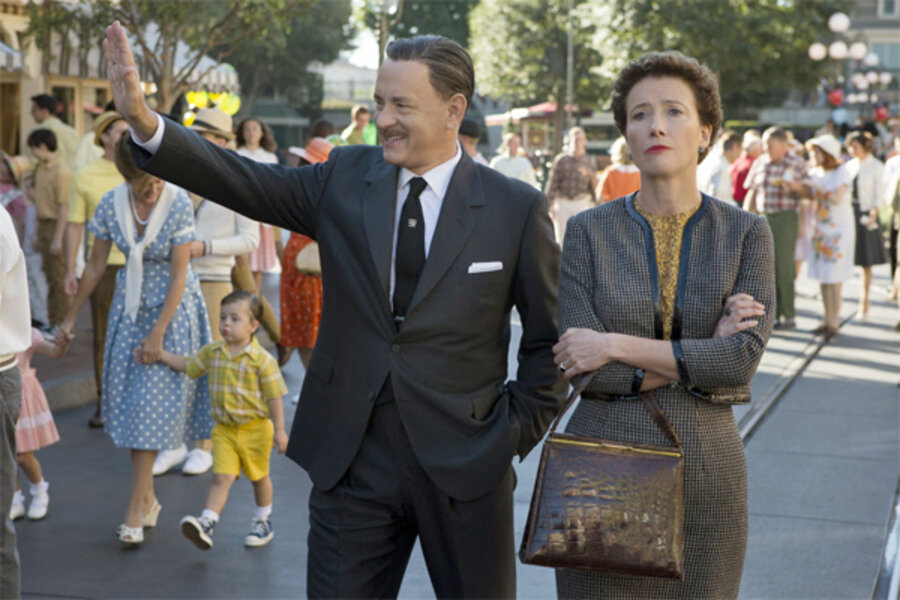'Saving Mr. Banks' tells the story of what happened behind the scenes of 'Mary Poppins'
Loading...
Countless children and adults know the story of stern nanny Mary Poppins, her bottomless carpetbag, and the magic she brings to the lives of Victorian children Jane and Michael Banks.
But how did the children’s novel get to the screen? It turns out it was a somewhat arduous journey.
And that process is the subject of the film “Saving Mr. Banks,” which opened in wide release on Dec. 20. “Nanny McPhee” actress Emma Thompson portrays “Poppins” author P.L. Travers, who is reluctant to have her work put on the screen. “Captain Phillips” actor Tom Hanks portrays Walt Disney, who’s hoping to persuade the author to allow her story to be filmed by his studio.
The cast also includes “The Office” actor B.J. Novak and Jason Schwartzman of “Moonrise Kingdom” as the Sherman Brothers, who were behind the music for “Poppins,” as well as actor Bradley Cooper as “Poppins” screenwriter Don DaGradi and Paul Giamatti as Travers’ limo driver. “Fright Night” actor Colin Farrell plays Travers’ father, seen in flashbacks.
Hanks told USA Today that playing such an internationally recognized figure wasn’t easy.
“Immediately it just becomes this burden, the quest for authenticity,” he said.
Meanwhile, Thompson said she was attracted to Travers’ prickly nature.
“I loved the fact that she was so rude to everyone,” she told USA Today. “I like unpleasant people very much sometimes, especially difficult, strong women.”
Meanwhile, the movie is already earning awards-season buzz as a possible contender for major prizes such as Best Picture, Best Actor (Hanks), and Best Actress (Thompson) at the Oscars. Thompson already earned a nod for the film from the Screen Actors Guild Awards, which are often a guide to what will win later in the season. Hanks missed out on a Best Actor nomination but may be splitting his own vote with his work in this year’s film “Captain Phillips.”







